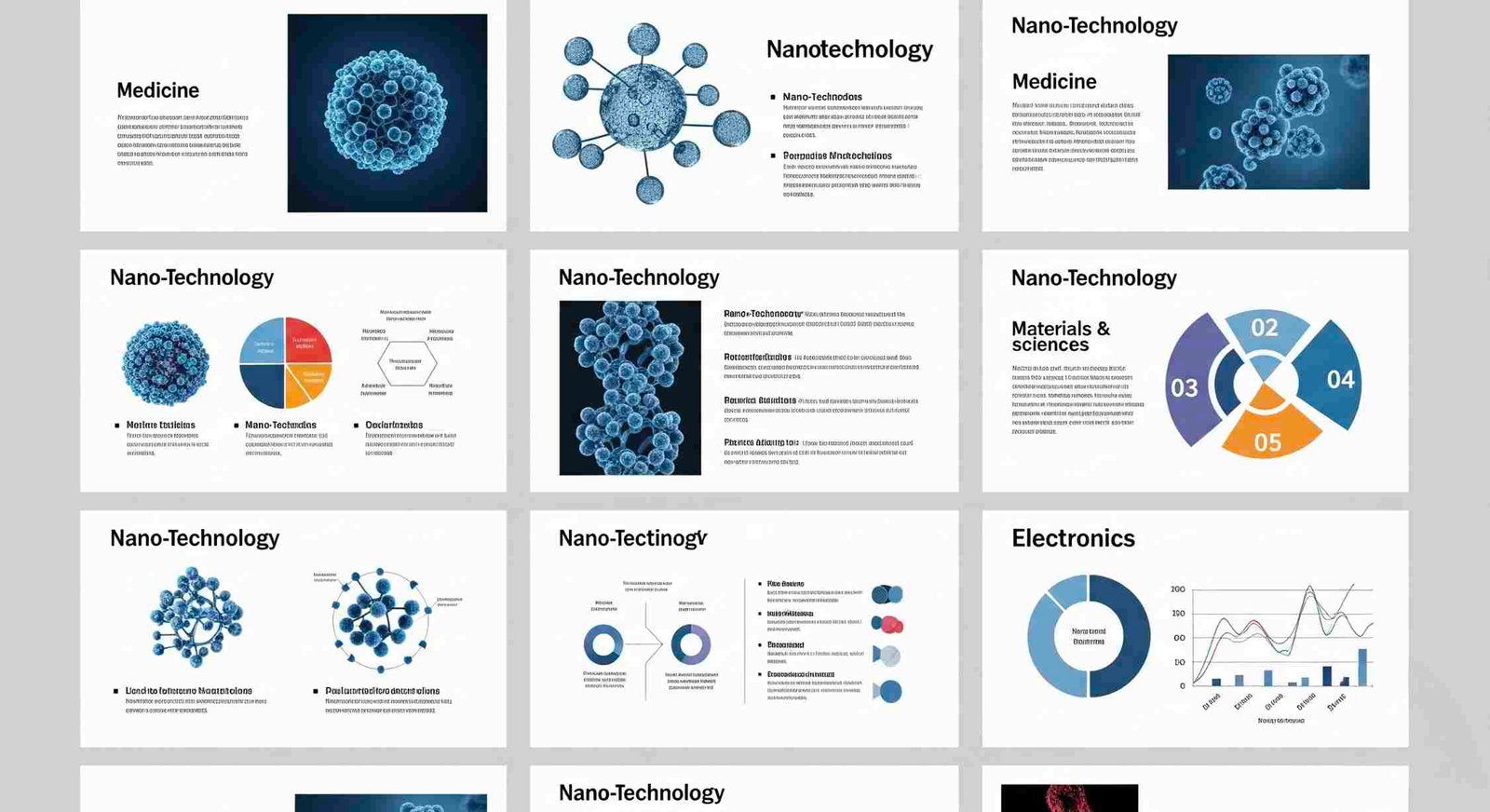tech
Unlocking the Future with nano technologies filetype:ppt: A Deep Dive into Nanotech Innovation

Nanotechnology is one of the most exciting and revolutionary areas of science in the 21st century. It deals with materials and devices on an atomic or molecular scale, unlocking possibilities that were once confined to science fiction. Whether it’s in medicine, energy, electronics, or environmental solutions, nano technologies are reshaping the way we live. And if you’ve ever searched for “nano technologies filetype:ppt” online, you’re likely looking for presentations that explore the depth and scope of this transformative field.
In this article, we’ll walk through how nano technologies are changing various industries, the significance of nano-based research, and why educational resources like PowerPoint presentations are essential for understanding and sharing these concepts.
The Basics of Nanotechnology
At its core, nanotechnology involves manipulating matter at a scale of 1 to 100 nanometers. A nanometer is one-billionth of a meter—so small that it’s invisible to the naked eye and even to most microscopes. At this scale, materials can exhibit different physical, chemical, and biological properties than they do at larger sizes.
Researchers use this scale to develop stronger materials, faster electronics, and more targeted drug delivery systems. For those wanting an overview, searching for nano technologies filetype:ppt often leads to educational slides that break down these basics into digestible content.
Key Concepts in Nanoscience
Nanoscience involves understanding quantum effects, surface area to volume ratio, and nanoscale interactions. These are not just scientific curiosities—they have real-world applications that impact everything from consumer products to space exploration.
Applications of Nanotechnology in Modern Life
Nanotechnology is no longer confined to the lab. Its applications span across sectors that directly affect our everyday lives. From smartphones and sunscreens to batteries and biomedical devices, the impact is both broad and deep.
Medical Breakthroughs
One of the most promising uses of nanotech is in medicine. Nanoparticles can deliver drugs directly to cancer cells, improving treatment effectiveness while minimizing side effects. This targeted approach reduces damage to healthy tissues and boosts patient recovery.
If you’re searching nano technologies filetype:ppt with a healthcare focus, you’ll find presentations showcasing clinical case studies, innovations in nano-medicine, and future treatment models.
Nanotechnology in Environmental and Energy Sectors
The role of nanotechnology in sustainability cannot be understated. It contributes significantly to renewable energy solutions and environmental conservation efforts.
Green Nanotech for a Cleaner Planet
Nanomaterials are used to clean up oil spills, filter water, and improve air quality. They can also be integrated into solar panels to increase energy efficiency. These developments are central to combating climate change and building a more sustainable world.
Looking for nano technologies filetype:ppt related to environmental science? Educational resources in this format help students and professionals grasp complex ideas with visuals and real-world examples.
Challenges and Ethical Considerations
While nanotechnology presents numerous benefits, it also raises important ethical, legal, and safety concerns. There is ongoing debate about the long-term health effects of nanoparticles and how they interact with biological systems.
Regulatory and Safety Frameworks
Governments and research institutions are actively working on safety protocols to govern the development and deployment of nano products. Transparency, environmental risk assessment, and informed public dialogue are crucial as we integrate these technologies into society.
The Importance of Educational Resources in Nanotech
Access to clear, engaging educational materials is essential in advancing nanotechnology. One of the most effective ways to learn and teach about the field is through PowerPoint presentations. That’s why searches like nano technologies filetype:ppt are so common among educators, students, and professionals.
Why Use PPTs to Understand Nanotech?
Slides simplify complex scientific information. They combine visuals, bullet points, and structured flow, making it easier to communicate concepts in classrooms, seminars, and research discussions. Many universities and conferences share slide decks publicly, offering accessible entry points into this cutting-edge science.
Frequently Asked Questions
What is nanotechnology used for today?
Nanotechnology is widely used in medicine, electronics, cosmetics, agriculture, and energy solutions. It enhances material performance and enables precise drug delivery.
Why is nanotechnology important for the future?
Nanotechnology offers sustainable solutions, smarter diagnostics, and improved electronic devices, all of which are crucial in addressing global challenges.
Where can I find nano-related educational content?
You can find nano-related presentations by searching “nano technologies filetype:ppt” on search engines or academic databases. Many institutions provide free access to lecture slides and research summaries.
Are there any risks involved with nanotech?
Yes, the long-term impact of nanoparticles on health and the environment is still under research. Proper regulation and safety protocols are being developed.
How does nanotech affect the environment?
Nanotech helps by creating better water filtration systems, cleaner energy solutions, and pollution control tools. However, its manufacturing and waste must be monitored for sustainability.
Conclusion
Nanotechnology is one of the most transformative forces in science and technology today. From reshaping medical treatments to enabling cleaner energy and smarter electronics, its potential is vast. The growing interest in learning materials like nano technologies filetype:ppt shows how crucial education is in understanding and applying these innovations.
As the field expands, so too will our need for accessible, engaging, and accurate educational content. Whether you’re a student diving into nanoscience or a professional exploring practical applications, the world of nanotechnology has something exciting in store for you.

 tech3 weeks ago
tech3 weeks agoExploring the World of AI Creativity Through ai-work-archives-ghaus-editz

 business4 weeks ago
business4 weeks agoExploring the Rise of Sichuan Tong Dao Technology Co Ltd in China’s Tech Industry

 tech4 weeks ago
tech4 weeks agoEmpowering Digital Innovation: Anantax Technologies Pvt Ltd at the Forefront of IT Solutions

 tech4 weeks ago
tech4 weeks agoThe Ultimate Guide on How to Run Star Technology Modpack Server Minecraft






















